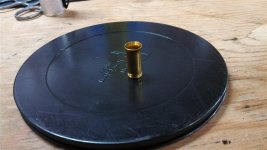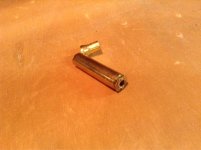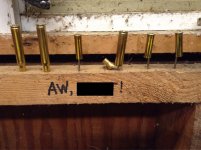robert1804
Member
I'm a returning shooter and reloader after about a 33 year lay-off. Started again 4 months ago. Thought I'd share a few bloopers and a blunder.
First, I charge powder with the cases in a loading block. About a month ago, I got bullets seated in 30-odd cases out of the 50 in that block before realizing I hadn't visually checked them for the powder level. Since it was a 7 grain charge in matching .38 brass, I weighed them (beam scale). All were fortunately within 3-4 grains and shot just fine.
One failure to fire. Primer in upside-down.
Then, three days ago, I managed to run a .44 case into an expander die with my left index finger in the way. A small cut band-aided, then back in business.
The best one though, was emptying a powder measure about half full of Unique into an almost new 1 pound container of Power Pistol. Well, $*^@!!. A $30 pound of fertilizer isn't as bad as finding more Power Pistol.
I'm sure nobody else here has ever done anything, well…….less than fully smart while reloading.
First, I charge powder with the cases in a loading block. About a month ago, I got bullets seated in 30-odd cases out of the 50 in that block before realizing I hadn't visually checked them for the powder level. Since it was a 7 grain charge in matching .38 brass, I weighed them (beam scale). All were fortunately within 3-4 grains and shot just fine.
One failure to fire. Primer in upside-down.
Then, three days ago, I managed to run a .44 case into an expander die with my left index finger in the way. A small cut band-aided, then back in business.
The best one though, was emptying a powder measure about half full of Unique into an almost new 1 pound container of Power Pistol. Well, $*^@!!. A $30 pound of fertilizer isn't as bad as finding more Power Pistol.
I'm sure nobody else here has ever done anything, well…….less than fully smart while reloading.












